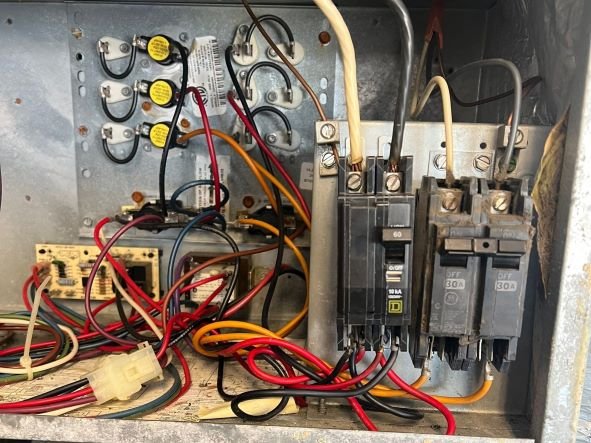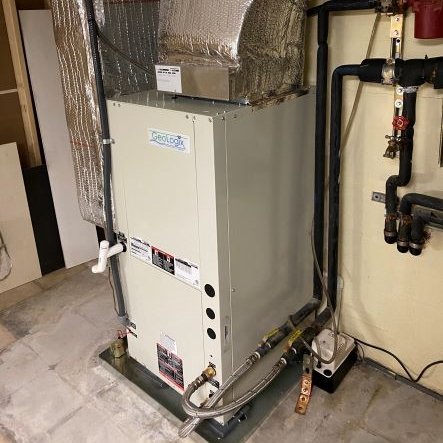What is the best use of Electric Heating?
First, you might need to know how each works and when they are available.
Indoor temperature is a crucial consideration in the architectural design of a house. Architects are expected to understand HVAC systems and be able to incorporate them into their construction designs. As the homeowner, the comfort of your living space depends on the ability to achieve the desired temperature of your indoor air. This is why the design and type of heating and cooling system are important.
There are several applications for electric heating in your home:
Air source heat pumps
Electric resistance heating
Water source heat pumps
Radiant floor heating
Domestic water heaters
Before leaping to invest in these types of heating systems, you must weigh your advantages and understand how the different heat sources work. For example, those living in moderate climates would need less heat than those living in the northern region. Energy cost is another factor to consider.
Here is everything you need to know to get started.
Heat pump condenser
What is a Heat Pump, and How Does it Work?
It may not seem obvious, but even an outdoor air temperature below 32 F still has a small amount of heat. It could be snowing outside, but still, heat is present. A heat pump, being part of a central heating and cooling system, uses the outside air temperature to cool your entire home during the summer months and heat it during the winter. This is accomplished using a reversing valve to change the refrigerant flow.
Heat pumps are a single versatile product that uses the properties of refrigerant to transfer heat from a cold temperature to a warmer temperature. Heat pumps do not generate heat. They transfer heat. They can cool and heat your space for a quarter of the price as running a standard electric resistance heating because it doesn't waste heat.
Heat pumps are more energy efficient than other electric heating sources and save on energy costs. Under optimal climate conditions, it can transfer as much as 350% more energy than it consumes trying to heat your home.
However, the efficiency of this appliance is reduced in cold air climates as it is required to work twice as hard to generate heat as in warmer temperatures.
In determining the energy efficiency of heat pumps, the proper sizing of the unit is a major consideration. Heat pumps are sized to heat and cool based on square footage, home insulation properties, ceiling heights, windows, doors, etc. A load calculation should always be performed to properly size your heat pump system. Heat pumps that are too small will not adequately heat your home. Heat pumps that are too big will not remove humidity from the air inside your home.
Heat pumps work best in a well-insulated house with properly installed ductwork. Your greatest heat loss can be your ductwork. You can lose as much as 30% of the heat generated.
What are Electric Resistance Heating Systems and How Do They Work
Electric heating systems use electricity as the primary energy source to generate heat. While heat pumps might seem suitable for most homeowners, electric resistance heat is important in colder regions and where other heating sources are unavailable or less cost-effective.
For instance, if you live in places where the cost of electricity is low compared to gas or oil, electric heat would be your best bet. Homes where it's impossible to extend central heating ductwork may also benefit from electric heat. Another great use for electric resistance heaters is radiant floor heating. A heated floor may seem like excess but if you've lived in homes with large amounts of tile or concrete flooring you would understand why it's wanted.
If you have a standard air source heat pump, it uses electric resistance heaters as a backup for your heat pump. Heat pumps have difficulty transferring heat when outside air is less than freezing. In this case, the electric heat is used to meet the heating needs. The electric heat is also used to defrost the heat pump which can sometimes freeze in low temperatures.
Electric heating systems are installed either through electric baseboard heaters along the walls of rooms or through an electric furnace. An electric baseboard heater or electric radiator is mostly used to extend a central heating system or heat a small room space. Electric baseboard heaters can be dangerous. They will be hot to the touch which can be an issue if you have small children. Additionally, they can be a fire hazard if not maintained clean and free of debris.
Electric Furnaces work sort of like a hairdryer. It is installed into your heating and cooling system and produces heated air using wire coils. These are very common in manufactured homes. Many manufactured homes are initially outfitted with standard air conditioners and electric heat only. Most homeowners later convert their outdoor unit to a heat pump to use less energy and save on utility bills. However, some homeowners prefer the feel of electric heating over the feel of heat pumps. Electric heated indoor air tends to feel much warmer than the warm air created by a heat pump.
Electric heating can incur heavy energy costs. But it can be cheap to install and maintain. As mentioned, many prefer the comfort of the heat generated by electric heating.
How Heat Pumps Are Combined With Natural Gas Furnace
If you are considering combining the heating and cooling capabilities of your heat pump with that of the gas furnace, then you are entering the realm of a dual-fuel system.
A dual-fuel heat pump system is an HVAC system that pairs the heat pump with a gas furnace and alternates between the two fuel sources to maximize comfort. Since heat pumps are less efficient outdoor air is cold, meeting the heating demand becomes a challenge. Alternating between both technologies will allow the heat pump to operate at a mild temperature and switch automatically when the temperature outside is low.
Heat pumps operate just like air conditioners in the cooling mode. However, when the inside temperature needs heating, it shifts to the heating mode and reverses its refrigerant flow to transfer heat from the outdoor air to the indoor air. When the demand surpasses the heating capacity of a heat pump, it changes heating mode again and switches to the gas furnace.
The auto-switching of the heating mode can be controlled or set from the thermostat or control system by your HVAC contractor. It can also be set to switch between the heating mode and cooling mode during the early heating season when temperatures are mild. These systems are designed to meet your cooling and heating needs efficiently year-round. Apart from being efficient, they are consistent, reliable, and reduce energy costs.
Water Source Heat Pumps
Water source heat pump
Because of the versatility of heat pump technology, it can be used in many applications. Most heat pumps you encounter are air-source heat pumps. But heat pumps can be designed as water source heat pumps and be used even as a pool heaters.
A heat pump transfers heat by convection meaning it uses air or water as a medium. The heat transfer coefficient of water is much higher than air. Therefore, a water-source heat pump is more energy efficient than an air-source heat pump.
You might ask why more homes don't use water-source heat pumps if they're so much more efficient. The main reason for this is that it requires a huge water source to sustain operation. Most suburban homes don't have access to such a source of water. Additionally, passages within the heat pump have close tolerances and the water must be relatively clean of debris to prevent clogs. This is why the most common uses of a water source heat pump are in large apartment buildings or geothermal heat systems.
Apartment buildings can support a large circulating, closed-loop water system. In this application, the water is piped to each apartment and connected to a water source heat pump within the apartment. This has a lot of advantages. A water source heat pump is typically designed as a packaged unit, meaning the condenser, compressor, blower, and evaporator are all in one case. This means it can be installed almost anywhere. Most apartment buildings use air-source heat pumps. This calls for extensive amounts of refrigerant lines, wiring, and drains because you would have both an indoor and outdoor unit.
Geothermal heat pumps are very energy efficient and have the same advantages as those for apartment buildings. They can, however, be very costly to install and have limited use depending on the geographical location and water table. Geothermal heat pumps require a comprehensive piping system called a ground source loop. The loop is buried in the ground and can be horizontal or vertical. It's the design and installation of this ground source loop that makes it cost-prohibitive for many homeowners. The geothermal heat pump itself is not significantly more expensive than a standard air source heat pump packaged unit. There are some options for the ground source loop that could make it a little more cost-effective. If a home is near a large pond or lake, the loop can be extended into the water which would limit the size of the ground source loop.
Where You Live Matters
Understanding the different types of heat sources helps you understand the suitable areas where they are most applicable. For example, a heat pump is ideal for climate regions where outdoor temperature is 35F or higher. Cold air regions or those with the temperature falling below freezing point, gas, or electric resistance heat are better options. With a dual fuel system, you can achieve the best comfort-to-energy efficiency ratio and work great in most climates.
Conclusion:
In conclusion, determining the best use of electric heating involves a careful consideration of various factors, including the specific climate of your region, energy costs, and the desired level of comfort. Different types of electric heating systems, such as air source heat pumps, electric resistance heating, water source heat pumps, radiant floor heating, and domestic water heaters, each have their unique advantages and applications.
Air source heat pumps stand out for their energy efficiency and versatility, transferring heat rather than generating it, making them suitable for moderate climates. On the other hand, electric resistance heating systems, including baseboard heaters and electric furnaces, may be more appropriate for colder regions or where other heating sources are impractical or expensive.
Combining heat pumps with natural gas furnaces in a dual-fuel system provides an efficient solution for maintaining comfort in various temperature conditions. The auto-switching capability ensures optimal performance and energy savings throughout the year.
Water source heat pumps, although highly energy-efficient, are limited by the availability of a large water source, making them more suitable for specific applications such as apartment buildings or geothermal heat systems.
Ultimately, the choice of the best electric heating system depends on factors like climate, energy costs, and the specific requirements of your living space. Understanding these considerations allows homeowners and architects to make informed decisions to achieve both comfort and energy efficiency in residential heating systems




